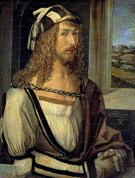Art, Art History and Design, School of

School of Art, Art History, and Design: Faculty Publications and Creative Activity
Document Type
Article
Date of this Version
12-1995
Abstract
Woodcuts produced by the Nuremberg school during the early sixteenth century provide insights into the history of taste, in particular the changing nature of the bawdy aesthetic so prevalent in the art of the time. Sebald Beham's Nose Dance of c. 1534 (fig. 170) offers a good case in point.' The print represents in the foreground a group of large-nosed men and one woman, and a fool who exposes himself (at lower right). By the early seventeenth century the woodblock had been altered, removing most of the offensive areas -- the large noses and some of the revealed body parts (fig 175). Beham's print will be discussed here, first, within the context of German culture of the time and the various meanings noses held, and as part of a body of bawdy imagery common to early sixteenth-century Germany The print will also be evaluated in light of the late sixteenth-century development away from the overt bodily oriented imagery of the earlier part of that century Beham's woodcut will be understood, therefore, in the context of its time and the meanings it then held.


Comments
Published in PRINT QUARTERLY, XII:4 (December 1995), pp. 343-360. Copyright © 1995 Print Quarterly Publications. http://www.printquarterly.com/ Used by permission.